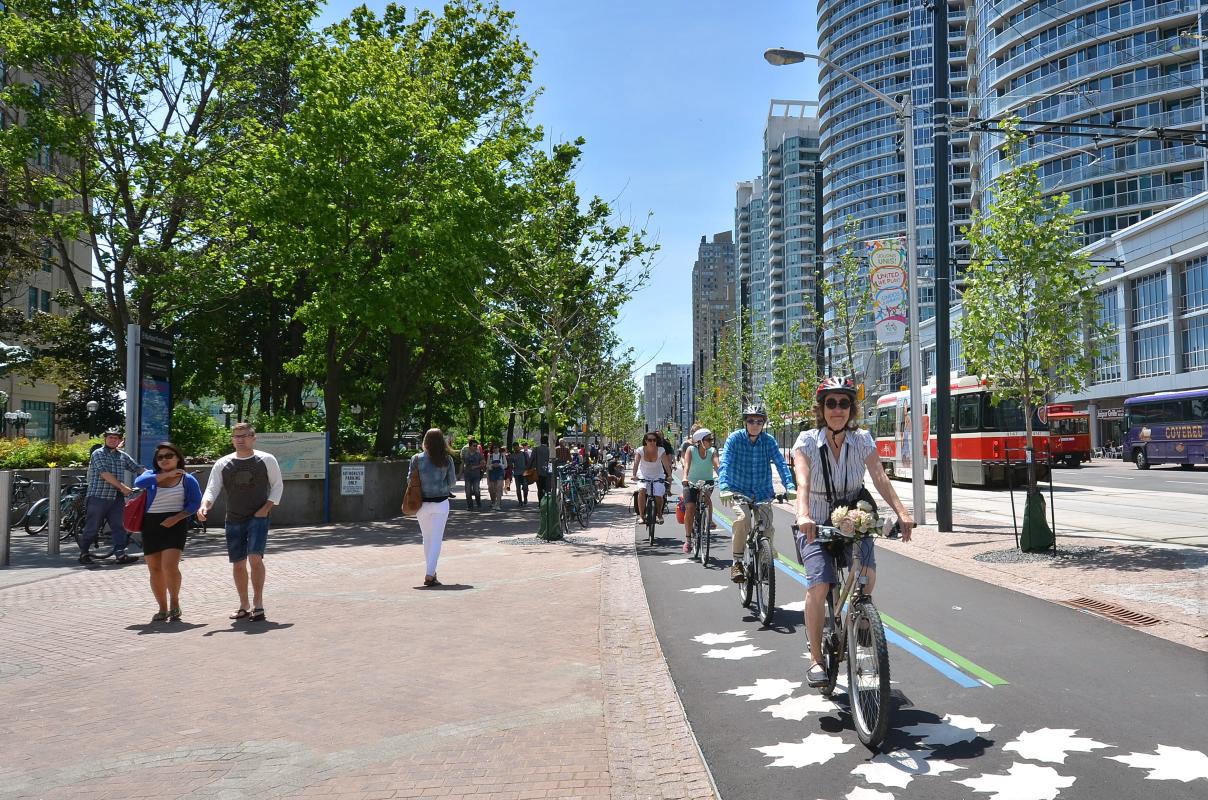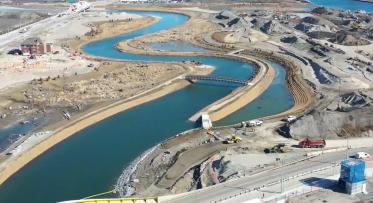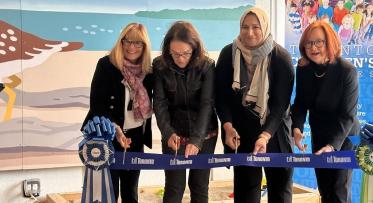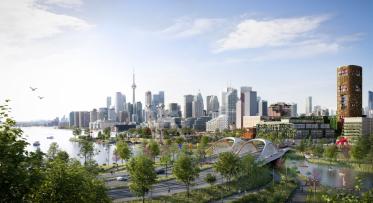We’re replacing trees along Queens Quay. Here’s why.
A view of the revitalized Queens Quay looking west from York Street.
POSTED: OCTOBER 24, 2018
BY: MEGHAN HOGAN
Back in June 2015, we celebrated the opening of Toronto’s revitalized waterfront boulevard – Queens Quay. Once a street that featured limited space for pedestrians and aging infrastructure, the street was transformed into a stunning boulevard that included a newly separated light-rail right-of-way, a new section of the Martin Goodman Trail that connected the Trail across the downtown waterfront, and an enlarged pedestrian promenade.
A central part of our revitalization plans for the waterfront, including Queens Quay, is to promote healthy trees and help the City of Toronto double its tree canopy over the next 50 years. The new design for Queens Quay, which was developed as part of an innovative design competition for the Central Waterfront, included planting roughly 227 trees along the public promenade to the south and line the pedestrian sidewalk to the north.
To help these plantings grow into mature trees, a tiered web of rigid boxes known as soil cells were installed beneath the surface to prevent soil compaction and allow the tree roots to spread and thrive.
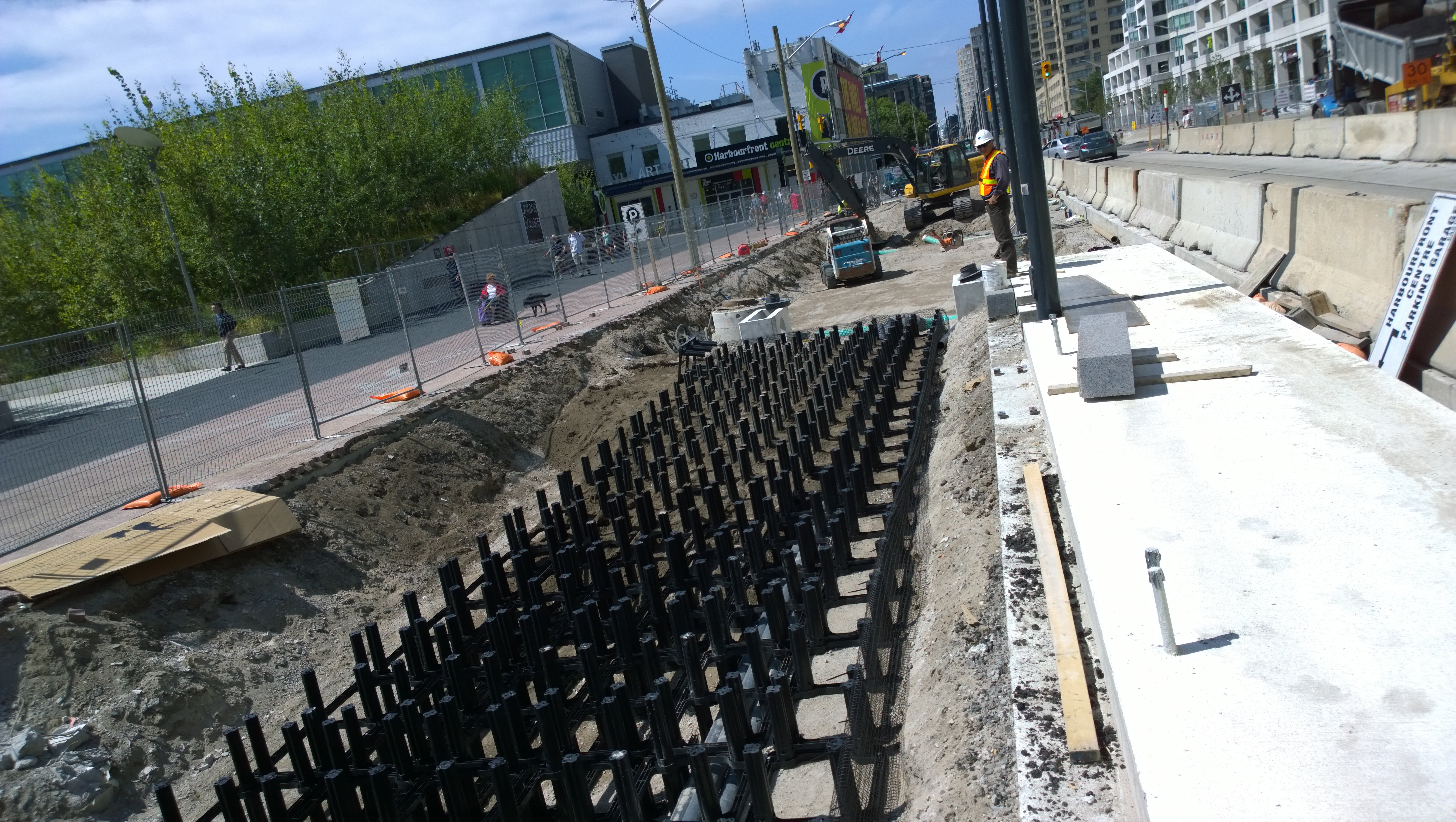
Hidden below the Martin Goodman Trail are roughly 4,000 square meters of soil cells, giving each tree more room to spread its roots.
Since Queens Quay reopened in 2015, we have been closely monitoring the health of the trees. It’s quite normal for some newly planted trees to take several seasons before thriving – an issue that is even more common among street trees where they face additional challenges such as damage from exposure, pollution and salt from winter road maintenance.
However, the rate of failure that presented on Queens Quay was higher than expected. So, we’ve been working closely with the City of Toronto’s Urban Forestry division to monitor the health of the trees, determine what was preventing the trees from thriving and come up with the best course of action.
The Verdict
Turns out, there are several factors that have contributed to the tree failure along Queens Quay. These include:
- The waterfront’s “micro-climate” that features exposed, windy and damp conditions.
- Harsh winter conditions from 2016-2018 (much colder and snowier than anticipated).
- High levels of road salt flushing into the tree root system. This is due in part to the adjacent Martin Goodman Trail which requires lots of salting to ensure trail users have a safe route during the colder months.
- Cold and damp spring weather has encouraged the growth of a fungal disease that has affected a large percentage of the sycamore trees on the south side of Queens Quay. This fungal disease, called Sycamore Anthracnose, causes the sycamore trees to lose their first set of leaves and twig sprouts in the spring. This results in significant dieback of major tree limbs and minimal leaf growth until late in the growing season.
Now that we have a solid understanding of what challenges the trees are up against, we’ve come up with a plan to address the issue. This plan involves replacing 154 trees on Queens Quay. As recommended by the City of Toronto's Urban Forestry division, we will be planting different species, which, along with the thriving trees that will be retained, will form a more diverse, resilient and healthy tree canopy.
Along the south side of Queens Quay, 135 trees have been identified to be replaced with a combination of Princeton Elm, Valley Forge Elm, Skyline Honey Locust, Marmo Maple, Autumn Fantasy Maple, and Jeffersred Maple. On the north side of Queens Quay, 19 trees have been identified to be replaced with similar species.
Waterfront Toronto is also working with the Waterfront BIA to introduce more sustainable methods of de-icing for Queens Quay.
The tree replacements will be taking place from October 22 to November 16. If you’re interested in learning more about what to expect during this time, you can read our latest construction notice for Queens Quay.
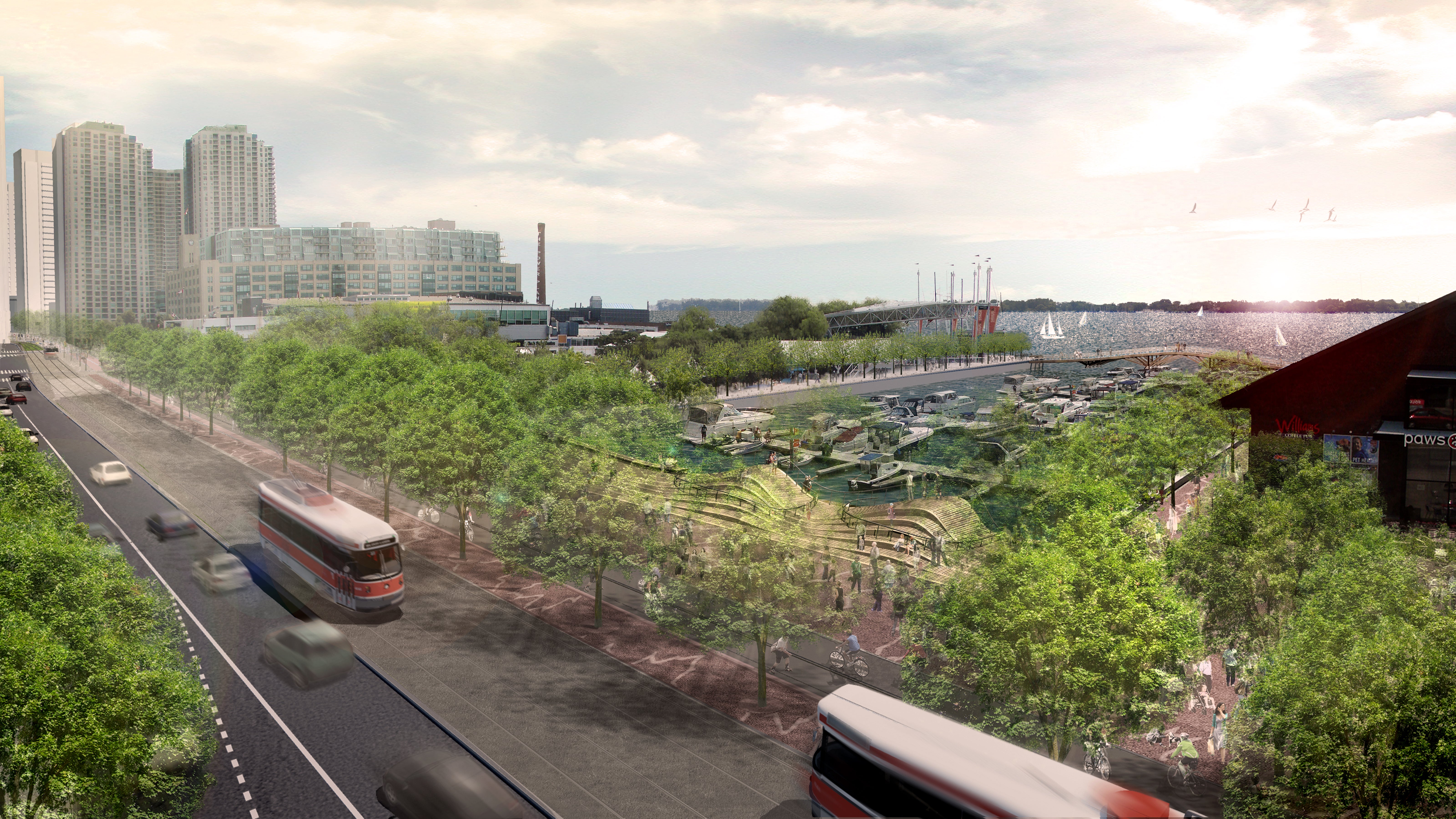
This rendering of the revitalized Queens Quay highlights the importance of green space to the street’s overall vision.
Our vision for Queens Quay was to create a spectacular waterfront boulevard that was a more welcoming, more beautiful and more enjoyable space for residents and visitors alike. We are committed to that vision and to cultivating a healthy tree canopy on the waterfront. We are confident that this action plan will help us deliver on the promise of a green Queens Quay moving forward. Thanks greatly to the community for their patience since 2015 as we worked to resolve this issue.

